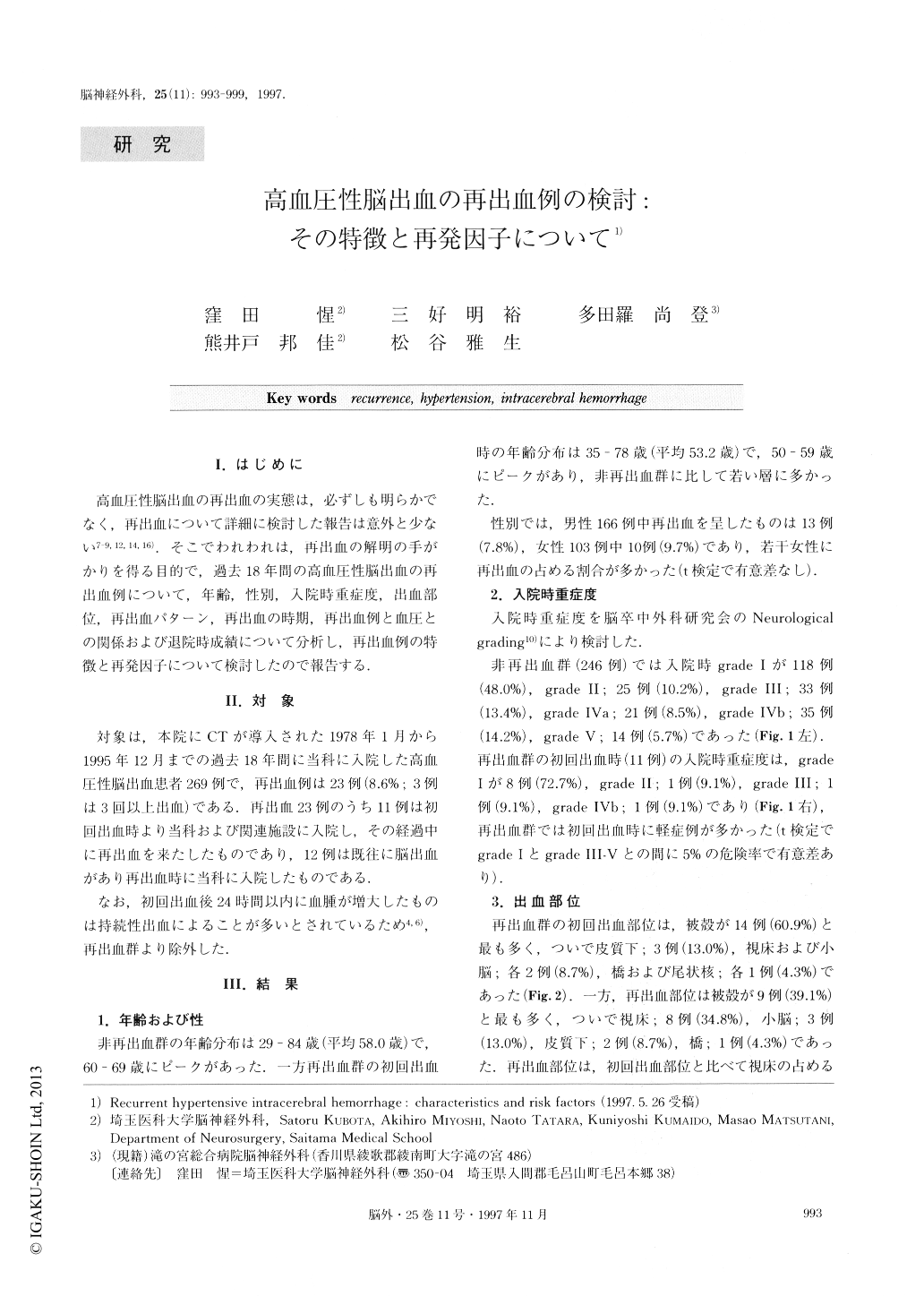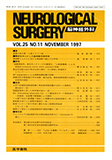Japanese
English
- 有料閲覧
- Abstract 文献概要
- 1ページ目 Look Inside
I.はじめに
高血圧性脳出血の再出血の実態は,必ずしも明らかでなく,再出血について詳細に検討した報告は意外と少ない7-9,12,14,16).そこでわれわれは,再出血の解明の手がかりを得る目的で,過去18年間の高血圧性脳出血の再出血例について,年齢,性別,入院時重症度,出血部位,再出血パターン,再出血の時期,再出血例と血圧との関係および退院時成績について分析し,再出血例の特徴と再発因子について検討したので報告する.
From January 1978 to December 1995, a total of 269 patients with hyperternsive intracerebral hemorrhage were treated in our institution. We reviewed 23 patients with recurrence to analyze their characteristics and risk factors.
Recurrence rate: The recurrence rate was 8.6%, showing it is not so rare.
Hemorrhagic site: In the first hypertensive in-tracerebral hemorrhage, the hemorrhagic site was puta-minal in 60.9%, subcortex in 13.0%, thalamic in 8.7% and cerebellar in 8.7%. In the second episode, the site was putaminal in 39.1%, thalamic in 34.8%, cerebellar in 13.0%, and subcortex in 8.7%. Therefore, during re-currence, hemorrhage occurred relatively more frequen-tly in the thalamus than in the initial site. Interval to rebleeding: The Interval between the first and second hemorrhage ranged from 2 months to 15 years (average 4 years and 7 months).
Blood pressure and recurrence: In patients in whom hypertensive intracerebral hemorrhage recurred in less than 3 years from the initial hemorrhage, blood pres-sure was well controlled by antihypertensive drugs dur-ing the interval. This indicates that factors other than blood pressure control are concerned in the prevention of recurrence. In patients in whom hemorrhage recur-red 3 years or more after the initial episode, blood pres-sure was poorly controlled, indicating that strict antihy-pertensive therapy is necessary to prevent recurrence after a long interval.
Risk factors for recurrence: The following risk fac-tors for recurrence of hypertensive intracerebral hemor-rhage have been reported in the literature: diastolic blood pressure ≧100mmHg; unstable hypertension (blood pressure abruptly rising from the normal range): uncontrollable hypertension; and hypoprotein-emia. Of these, we emphasize that unstable hyperten-sion is the most important risk factor, as illustrated in our series of patients.

Copyright © 1997, Igaku-Shoin Ltd. All rights reserved.


